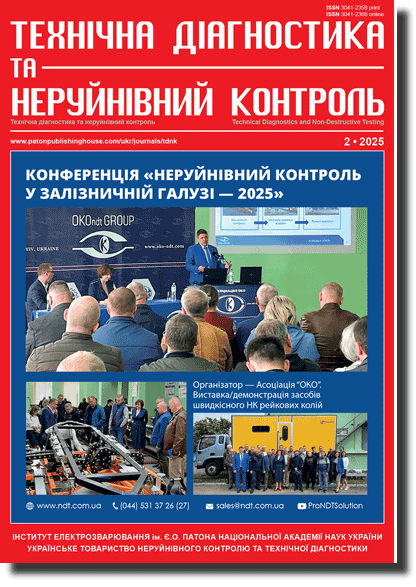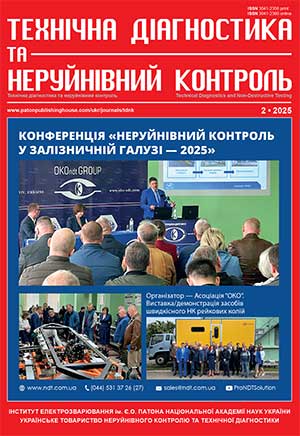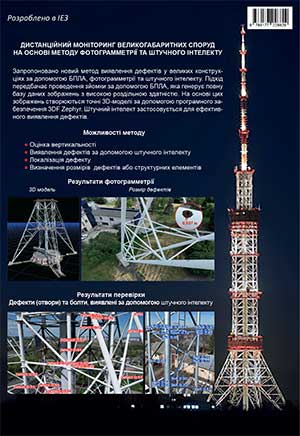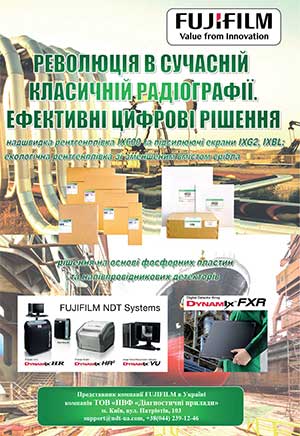| 2025 №02 (05) |
DOI of Article 10.37434/tdnk2025.02.06 |
2025 №02 (01) |
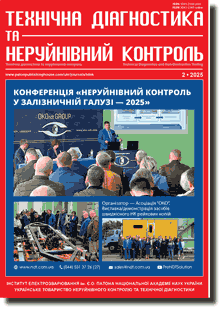
"Tekhnichna Diahnostyka ta Neruinivnyi Kontrol" (Technical Diagnostics and Non-Destructive Testing) #2, 2025, pp. 36-41
Application of sequential sampling inspection for quality control of measuring devices and sensors
M.M. Morozova
National Technical University of Ukraine «Igor Sikorsky Kyiv Polytechnic Institute». 37 Beresteysky Ave., 03056, Kyiv, Ukraine. E-mail: m.morozova@kpi.uaThis paper focuses on the implementation of sampling inspection based on the ISO 2859 series of standards. The provisions of these standards defining the methodology for lot quality assessment based on an attribute are analyzed, in particular ISO 2859-5:2005, which regulates sequential sampling plans. The key control parameters are determined, including the acceptance number, rejection number, and operating characteristic function. The research aims to adapt sampling inspection to the specifics of measuring and control devices and sensors, allowing for a reduction in inspection costs while improving decision-making efficiency. A mathematical model of sequential sampling inspection is presented, based on the binomial distribution, enabling an analytical assessment of the lot acceptance probability depending on the defect level and sample size. Calculations for various sample sizes and defect probabilities are performed, allowing for an evaluation of how control parameters affect the lot acceptance probability. As a case study, the inspection of thermistors with a specified nominal resistance tolerance is considered. It is established that increasing the sample size reduces the risk of defective items being accepted, while at an elevated defect level, the lot acceptance probability decreases significantly, demonstrating the effectiveness of sequential sampling inspection. Special attention is given to integrating sampling inspection into quality assurance processes, ensuring its rational application and adjustment based on production conditions. It is shown that the use of statistical inspection methods reduces the number of inspections without compromising quality assessment effectiveness. The necessity of considering production process specifics for the proper implementation of sampling inspection and ensuring its compliance with regulatory requirements is also emphasized. 11 Ref., 1 Tabl.
Keywords: sampling inspection plan, sequential sampling procedure, product quality control, measuring device, sensor
Received: 27.03.25
Received in revised form: 17.04.25
Accepted: 13.05.25
References
1. Parfentseva, N.O., Holubova, H.V. (2023) Statistical methods for quality control: A tool for data analysis in the statistica package. Statystyka Ukrainy, 100, 19-26 [in Ukrainian]. https://doi.org/10.31767/su.1(100)2023.01.022. Hrinchenko, H., Budanov, P., Boyko, T., Nechuyviter, O., Tsykhanovska, I. (2022) Application of qualimetry methods for evaluation of complex quality indicators of multiparameter objects. Mashynobuduvannia, 30, 73-84 [in Ukrainian]. https://doi.org/10.32820/2079-1747-2022-30-73-84
3. Svitlyshyn, I.I. (2023) Methodological approach to product quality assessment. Ekonomika, upravlinnia ta administruvannia, 1(103), 64-69 [in Ukrainian]. https://doi.org/10.26642/ema-2023-1(103)-64-69
4. Koretska, O. (2023) Ussing statistical methods of product quality management. Problemy suchasnykh transformatsii. Seriia: ekonomika ta upravlinnia, 8, 1-5 [in Ukrainian]. https://doi.org/10.54929/2786-5738-2023-8-10-02
5. Tsybulenko, V.O., Vorontsov, B.S. (2023). Quality control for traditional and additive manufacturing. In: Proceedings of the scientific and technical conference «Advanced engineering, technology and engineering education», 192-195 [in Ukrainian]. https://doi.org/10.20535/2409-7160.2023.XXIII.278009
6. Herasimov, S.V., Gridina, V.V. (2018) Method justifica tion nomenclature control parameters of radio systems and purpose of their permissible deviations. Systemy obrobky informatsii, 2(153), 159-164 [in Ukrainian]. https://doi.org/10.30748/soi.2018.153.20
7. DSTU ISO 2859-1:2001. Statistical control. Selective control by an alternative feature. Part 1: Sample control plans determined by the acceptance level of quality for sequential batch control tatystychnyi kontrol (ISO 2859-1:1999, IDT) [in Ukrainian].
8. DSTU ISO 2859-5:2009. Statistical control. Selective control by an alternative feature. Part 5. System of sequential sampling plans indexed by quality acceptance limits (QAL) for sequential sampling of batches (ISO 2859-5:2005, IDT) [in Ukrainian].
9. DSTU ISO 2859-10:2009. Statistical control. Selective control of an alternative characteristic. Part 10. Introduction to the ISO 2859 series of standards on sampling for alternative characteristics (ISO 2859-10:2006, IDT) [in Ukrainian]. ting of statistical methods in managing product qualit. Problemy i perspektyvy rozvytku pidpryiemnytstva, 30, 96-105 [in Ukrainian]. https://doi.org/10.30977/PPB.2226-8820.2023.30.96
11. Pankratova, O.M. (2021) Improvement of staff in modern conditions and development of trends in corporate educational processes. Ekonomika ta suspilstvo, 25, 1-6 [in Ukrainian]. https://doi.org/10.32782/2524-0072/2021-25-7
Advertising in this issue:
To order the electronic version of the paper:
M.M. MorozovaApplication of sequential sampling inspection for quality control of measuring devices and sensors
Technical Diagnostics and Non-Destructive Testing №02 2025 p.36-41
The cost of article (pdf): 13 $, 12 €, 150 UAH (1 copy. )
fill in the form below:
The cost of subscription/purchase order journals or individual articles
| Journal/Currency | Annual Set | 1 issue printed |
1 issue |
one article |
| TPWJ/USD | 384 $ | 32 $ | 26 $ | 13 $ |
| TPWJ/EUR | 348 € | 29 € | 24 € | 12 € |
| TPWJ/UAH | 7200 UAH | 600 UAH | 600 UAH | 280 UAH |
| AS/UAH | 1800 UAH | 300 UAH | 300 UAH | 150 UAH |
| AS/USD | 192 $ | 32 $ | 26 $ | 13 $ |
| AS/EUR | 180 € | 30 € | 25 € | 12 € |
| SEM/UAH | 1200 UAH | 300 UAH | 300 UAH | 150 UAH |
| SEM/USD | 128 $ | 32 $ | 26 $ | 13 $ |
| SEM/EUR | 120 € | 30 € | 25 € | 12 € |
| TDNK/UAH | 1200 UAH | 300 UAH | 300 UAH | 150 UAH |
| TDNK/USD | 128 $ | 32 $ | 26 $ | 13 $ |
| TDNK/EUR | 120 € | 30 € | 25 € | 15 € |
AS = «Automatic Welding» - 6 issues per year;
TPWJ = «PATON WELDING JOURNAL» - 12 issues per year;
SEM = «Electrometallurgy Today» - 4 issues per year;
TDNK = «Technical Diagnostics and Non-Destructive Testing» - 4 issues per year.





